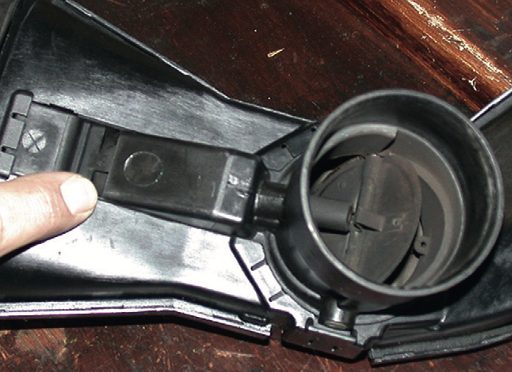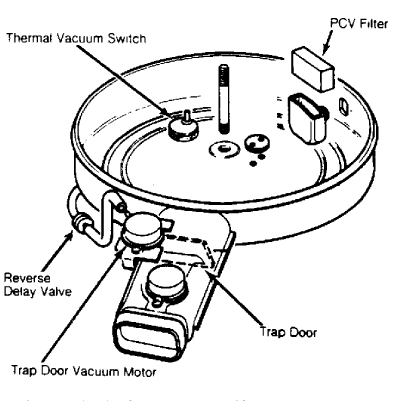When it comes to heating and cooling systems, warm-air control is a crucial component that regulates the flow of air and temperature within a building. One type of warm-air control that has been used for decades is the vacuum-type warm-air control.
Vacuum-type warm-air control systems work by using a series of ducts and fans to move air throughout a building. The system creates a vacuum within the ducts, which causes air to flow from the warmer areas of the building towards cooler areas. As the warm air moves through the ducts, it is mixed with cooler air, which helps to regulate the temperature.
There are a few key components that make up a vacuum-type warm-air control system. The first is the furnace, which heats the air that is then moved through the ducts. The second is the blower, which is responsible for moving the air through the ducts. The third is the ductwork, which is used to transport the air throughout the building.
One advantage of vacuum-type warm-air control systems is their ability to quickly and efficiently heat a space. Because the warm air is constantly moving through the ducts, it can quickly reach even the farthest corners of a building. This can be especially important in large buildings or commercial spaces where maintaining a consistent temperature throughout the space can be challenging.

Another advantage of vacuum-type warm-air control systems is their relatively low cost. Compared to other heating and cooling systems, vacuum-type warm-air control systems are often less expensive to install and maintain. This can be particularly beneficial for homeowners or businesses looking to save money on their energy bills.
However, there are also some disadvantages to vacuum-type warm-air control systems. One is that they can be noisy, particularly if the blower is located close to living or working spaces. Another is that they can be less effective at maintaining consistent temperatures throughout a building, particularly if there are leaks or gaps in the ductwork.
In summary, vacuum-type warm-air control systems have been a popular choice for heating and cooling buildings for many years. While they have some advantages, such as their low cost and quick heating capabilities, they may not be the best choice for all buildings or situations. It’s important to consider all of the options available when choosing a heating and cooling system for your home or business.
As I mentioned before, these systems use a furnace to heat the air and a blower to move the air through a series of ducts. The ducts are connected to registers or vents in different rooms throughout the building, which allows the warm air to be distributed evenly throughout the space.
The blower is powered by an electric motor and is typically located in the basement or utility room of the building. The blower pulls cool air from the rooms back through the return ducts and then pushes it through the furnace to be heated. The warm air is then sent back through the supply ducts to the registers or vents in the rooms.
One of the key features of vacuum-type warm-air control systems is the use of gravity to help move the air through the ducts. The supply ducts are typically installed in the ceiling or high on the walls of the building, while the return ducts are located closer to the floor. This creates a pressure difference that helps to move the air through the ducts without the need for additional fans or blowers.
Another important component of vacuum-type warm-air control systems is the use of filters to clean the air as it moves through the ducts. These filters can help to remove dust, pollen, and other particles from the air, which can be especially important for people with allergies or respiratory issues.
While vacuum-type warm-air control systems can be a cost-effective and efficient way to heat and cool a building, there are some potential drawbacks to consider. One issue is that the ductwork can sometimes leak or become damaged, which can cause air to escape and reduce the system’s effectiveness. Another issue is that these systems can be noisy, particularly if the blower is located near living or working spaces.
Overall, vacuum-type warm-air control systems can be a good choice for many buildings, particularly those with a simple layout and straightforward heating and cooling needs. However, it’s important to weigh the pros and cons and consider other options, such as radiant heating or ductless mini-split systems, to determine what system will work best for your specific needs.
Advantages:
- Cost-effective: Vacuum-type warm-air control systems can be less expensive to install and maintain compared to other heating and cooling systems, such as radiant heating or ductless mini-split systems.
- Efficient: These systems can quickly and efficiently heat or cool a building, as the warm or cool air is constantly circulating through the ducts.
- Even distribution: The ductwork in a vacuum-type warm-air control system is designed to distribute the air evenly throughout the building, providing consistent temperatures in every room.
- Filtered air: Vacuum-type warm-air control systems typically include air filters that remove dust, pollen, and other particles from the air, which can be especially beneficial for those with allergies or respiratory issues.
Disadvantages:
- Noisy: These systems can be noisy, particularly if the blower is located near living or working spaces.
- Potential leaks: If the ductwork is not properly installed or becomes damaged, air can leak out, reducing the efficiency of the system.
- Temperature regulation: Vacuum-type warm-air control systems may be less effective at maintaining consistent temperatures throughout a building if there are leaks or gaps in the ductwork.
- Limited control: These systems may not offer as much control over individual rooms or zones as other systems, such as ductless mini-split systems.
It’s important to consider both the advantages and disadvantages of any heating and cooling system before making a decision. Factors such as the size and layout of the building, budget, and specific heating and cooling needs should all be taken into account.










